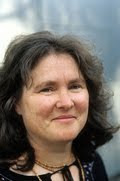In the tradition of Ann Kengalu's
Murder on the Mataniko Bridge comes another crime story set in the Solomon Islands.
Devil-Devil is a complicated story of custom killings, smuggling and power-struggles set mostly on the island of Malaita.
The author, G.W. Kent, spent eight years in the Solomons working in education and broadcasting. It is obvious that he has a thorough understanding of Malaitan customs, particularly in the north of the island although this knowledge doesn't cover all of the archipelago. (His reference to sorting out a dispute in Isabel using bride price is a case in point). I was also a little bemused about how the detective could walk from north Malaita, straight through to Kwaio land without coming across other language groups such as the Kwa'rae.
 |
Devil-Devil (Constable and
Robinson, 2011). |
Despite these shortcomings the plot keeps readers wondering how all these murders and the disappearance of an American could be related. There is plenty of action and tension and some violent scenes, but nothing too graphic.
The story is set in 1960, fifteen years after WW2 and almost as many years to come till independence. Kent does his best to show the islanders' disdain for their colonial masters. The main detective Ben Kella is a Lau man and the only indigenous policeman to reach the rank of sergeant. He is an
aofia, a custom man highly respected in his community. However he is considered by other islanders as a 'white blackfella', too educated to be a true islander, and too traditional to be accepted by the expats.
Kent has managed to capture the curious intertwining of faith that is common in the Solomons. Not only does Ben Kella straddle both worlds of spiritual tradition, but the other protagonist, the plucky Catholic nun, also accepts the presence of the pagan spirit world.
The familiar landmarks of the G. Club, Point Cruz wharf, Chinatown and the Fishing Village are all described well to those who know Honiara.
I enjoyed reading this although the quality of the writing is below average. Adverbs a-plenty pepper each page and make many sentences unwieldy, slowing the pace. If you enjoy a good crime plot however, and can overlook the flowery prose then you will enjoy Devil-Devil.

































